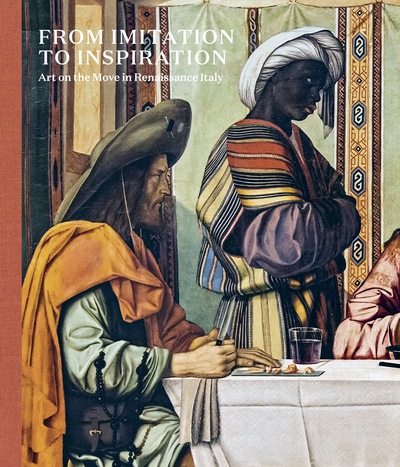Nous utilisons des cookies pour améliorer votre expérience. Pour nous conformer à la nouvelle directive sur la vie privée, nous devons demander votre consentement à l’utilisation de ces cookies. En savoir plus.
Art on the Move in Renaissance Italy
Holberton - EAN : 9781915401168
Édition papier
EAN : 9781915401168
Paru le : 14 mars 2025
60,00 €
56,87 €
Bientôt disponible
Pour connaître votre prix et commander, identifiez-vous
A paraître 14 mars 2025
Notre engagement qualité
-
 Livraison gratuite
Livraison gratuite
en France sans minimum
de commande -
 Manquants maintenus
Manquants maintenus
en commande
automatiquement -
 Un interlocuteur
Un interlocuteur
unique pour toutes
vos commandes -
 Toutes les licences
Toutes les licences
numériques du marché
au tarif éditeur -
 Assistance téléphonique
Assistance téléphonique
personalisée sur le
numérique -
 Service client
Service client
Du Lundi au vendredi
de 9h à 18h
- EAN13 : 9781915401168
- Editeur : Holberton
- Date Parution : 14 mars 2025
- Disponibilite : Pas encore paru
- Barème de remise : NS
- Nombre de pages : 400
- Format : H:1 mm L:245 mm E:280 mm
- Poids : 0gr
- Résumé : This fascinating study captures a unique ‘moment’ in the life of Renaissance Italy around 1500 – up to and specifically 1506 – a time of extraordinary artistic creativity. This creativity was stimulated above all by movement and exchange, as artists and artworks travelled the width and length of the peninsula and beyond. The author’s highly original uncovering of the networks and the multiple, sometimes novel, means of transmission in the period enables him to take the pulse of this remarkable ferment, which, up to 1506, did not yet know it was to become the High Renaissance. Recognized everywhere as an authority on Renaissance prints, in this new book resulting from years of research David Landau traces the constant movement of art and artists – and, often, their families and workshops – from one city to another, one court to another, one monastery to another, in search of work, patrons and prestige projects. He examines the impact of these interactions on the people involved, charting the remarkably rapid diffusion of styles, motifs and artistic innovations across Italy’s regions and in exchange with other countries. The diverse artworks here considered in a great variety of media, notably portable and/or multiple media such as drawings and prints, gems, plaques or medals, might serve a variety of purposes – diplomatic, nuptial, religious, social, amicable – revealing a constant curiosity and taste for the novel and ‘modern’. The book investigates how valuable objects, both antique and contemporary, were carefully packed and moved overland on Italy’s rivers or, where necessary, over treacherous roads and mountainous geography or by sea along its coasts, deftly skirting political turmoil, warring states and recurrent plagues. Drawing entirely on contemporaneous documents such as records of costs, commissions and fees, bills of lading, municipal archives, travellers’ accounts and artists’ own letters, the author vividly brings back to life the extraordinary fervour of that time as well as the obstacles, rivalries, trials and triumphs of being an artist or craftsman in the Renaissance. The patrons’ side is also portrayed, with a chapter on the activity of Isabella d’Este through the year 1506 and another on Dürer’s letters home from Venice in that year to his main friend and supporter, for whom he had to shop. We are thus taken – with remarkable detail – into the lives of itinerant artists, from the very famous, like Michelangelo, to the lesser known ones always worried about the next commission. The book recounts the adventures of the likes of Pinturicchio, Sodoma and Signorelli, and many almost unknown figures, and a full variety of small, now frequently neglected, objects of many kinds that transmitted the newest ideas and styles. The result is a unique and compelling analysis of artists, patrons and their milieux at a pivotal moment in Renaissance art, as if vividly recounted by a contemporary chronicler.

